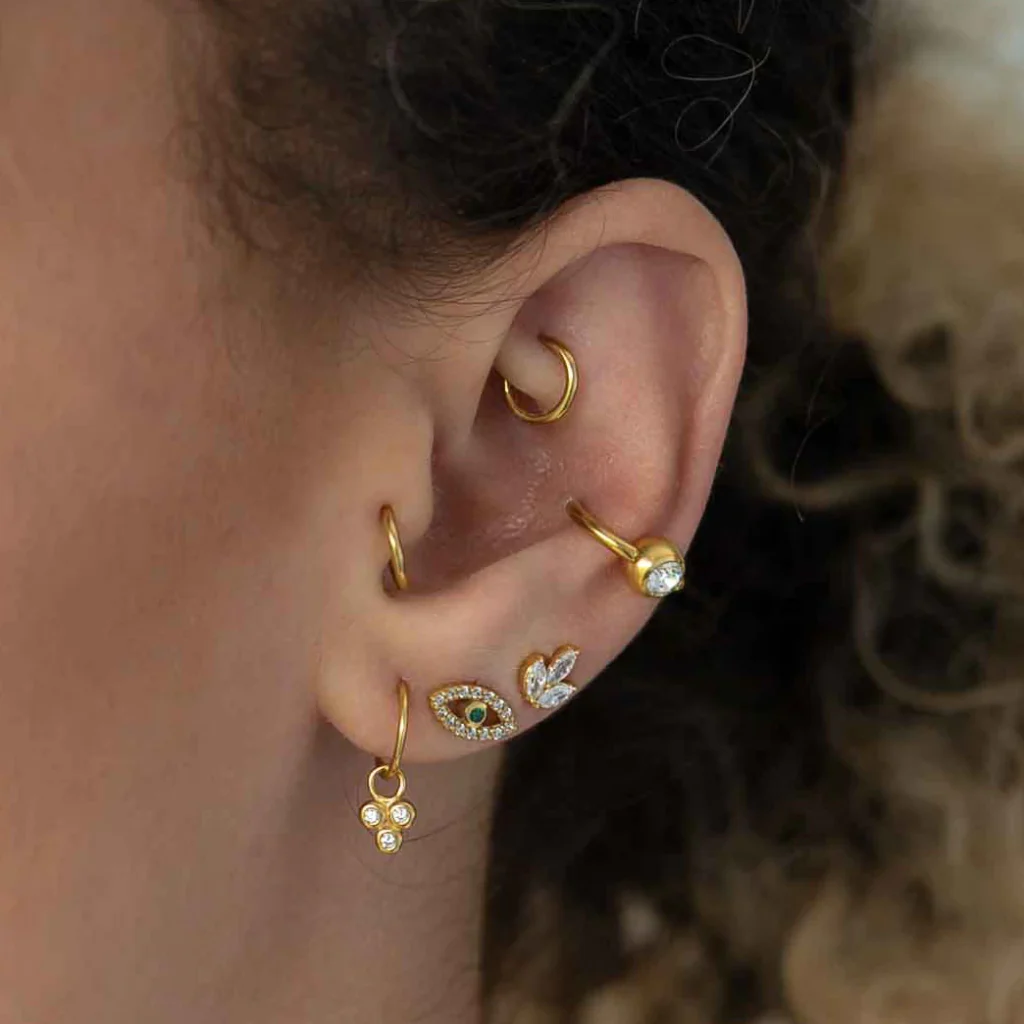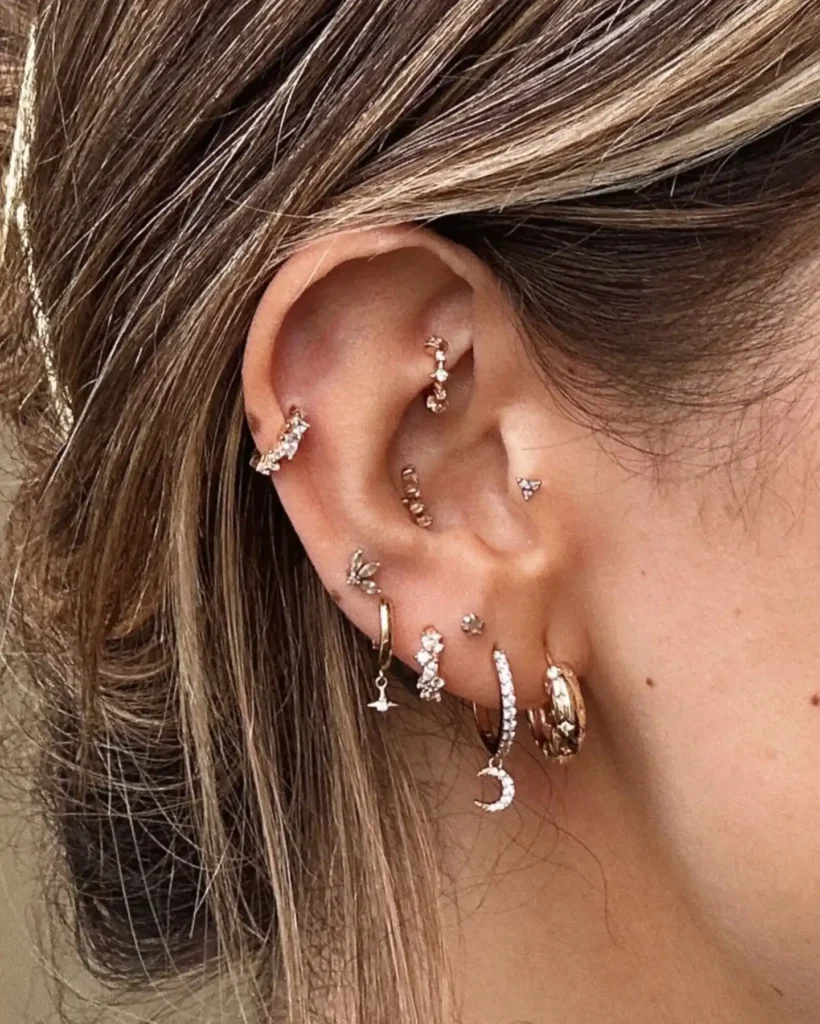Tragus piercings have surged in popularity as people seek unique and stylish ways to enhance their appearance. Situated on the small, thick piece of cartilage just in front of the ear canal, a tragus piercing offers a distinctive and eye-catching look.tragus jewelry: If you’re contemplating a tragus piercing, this comprehensive guide will cover everything you need to know.
What is a Tragus Piercing?
A tragus piercing is performed on the tragus, the small, curved piece of cartilage that partially covers the ear canal. This type of piercing stands out due to its uncommon location and the aesthetic appeal it provides. However, because of the thickness of the cartilage, it can be more painful compared to other ear piercings.

The Procedure
1. Preparation
Choosing a reputable and experienced piercing studio is crucial. Make sure the studio follows strict hygiene standards to prevent infections. Before the procedure, the piercer will discuss any allergies or sensitivities you might have to certain metals or cleaning solutions.
2. The Process
The piercer will start by cleaning the tragus area thoroughly. Using a sterilized, hollow needle, they will create a hole through the cartilage. The process is quick, usually taking only a few seconds. You might feel a sharp pain followed by a throbbing sensation.
3. Jewelry Selection
Initially, a small barbell or stud is recommended to accommodate swelling and promote healing. Once the piercing has fully healed, you can switch to different types of jewelry like hoops or more decorative pieces.
Healing Process and Aftercare
Healing from a tragus piercing can take anywhere from 3 to 9 months, depending on individual healing rates and how well you follow aftercare instructions. Proper aftercare is essential to prevent infections and ensure a smooth healing process.tragus jewelry.
1. Cleaning
Clean the piercing twice a day with a saline solution or an antiseptic recommended by your piercer. Avoid using alcohol or hydrogen peroxide, as these can be too harsh and delay healing. Use a clean cotton pad or swab to gently apply the solution around the piercing site.
2. Avoid Touching
Refrain from touching or twisting the jewelry unnecessarily. This can introduce bacteria to the piercing site and cause irritation or infection. Always wash your hands thoroughly before cleaning or touching your piercing.
3. Sleeping
Try to avoid sleeping on the side of the piercing. The pressure and movement can cause irritation and prolong the healing process. Consider using a travel pillow or donut-shaped pillow to relieve pressure on your ear while you sleep. tragus jewelry.
Potential Risks and Complications

As with any body modification, there are potential risks and complications to consider:tragus jewelry.
1. Infection
Signs of infection include excessive redness, swelling, pain, and discharge. If you notice any of these symptoms, consult with a healthcare professional immediately. An untreated infection can lead to more serious complications.
2. Allergic Reactions
Some people may experience allergic reactions to certain metals used in jewelry. To minimize this risk, use high-quality, hypoallergenic jewelry made from materials like surgical steel, titanium, or niobium.
3. Keloids
Keloids are raised scars that can develop at the site of the piercing. If you are prone to keloids, discuss this with your piercer beforehand. They may recommend specific aftercare techniques to minimize the risk.
Benefits of a Tragus Piercing; tragus jewelry
Despite the potential for pain and complications, many people find the tragus piercing worth it for several reasons: tragus jewelry.
1. Unique Appearance
A tragus piercing is less common than other ear piercings, making it a standout feature that draws attention.
2. Versatility
Once healed, you can choose from a variety of jewelry styles, allowing you to personalize your look. Whether you prefer simple studs or elaborate hoops, there are countless options to express your style.
3. Expression of Style
A tragus piercing can be a subtle or bold statement, depending on your choice of jewelry. It allows for individual expression and can be an elegant addition to your overall appearance. tragus jewelry.
Conclusion
Tragus piercings offer a fashionable and unique way to enhance your look. By understanding the procedure, aftercare, and potential risks, you can make an informed decision about whether this piercing is right for you. Always choose a professional piercer and follow aftercare instructions to ensure a safe and successful healing process.
For those who are willing to endure a bit of pain for the sake of style, a tragus piercing can be a beautiful addition to your body art collection. With proper care and the right jewelry, your tragus piercing can be a standout feature that highlights your unique style.tragus jewelry.
Discover more trends:
Follow us on: 📌Pinterest | 📘Facebook





